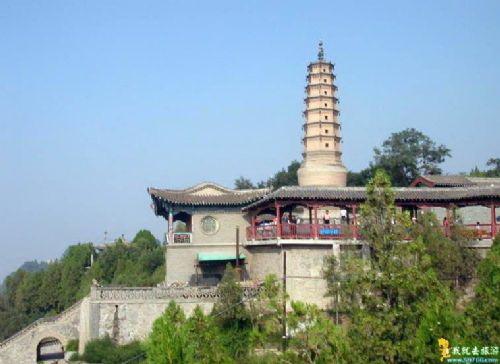『Silk Road in Gansu』
Crescent Lake
Crescent Lake, located on the north slopes of echoing –sand mountain, was formed by spring water trickling up into a depression between huge sand dunes, forming a crescent-shaped pond, hence the name. The Crescent Lake has remained free from the encroachment of sand and never dried up for more than two thousands years, and was reputed as “the number one spring in the desert”.
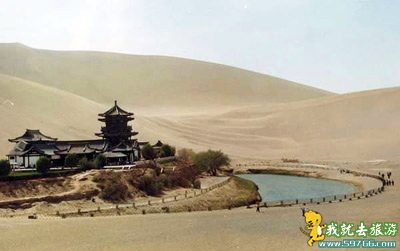
DunHuang
A silk road terminal, dunhuang played a pivotal role in chinese trade and cultural exchanges with the west in ancient times. dunhuang grottoes is a colossal treasure-trove of, among other things, 45,000 square meters of frescos and 2,415 painted sculptures. the discovery of tripitaka cave at dunhuang 100 years ago unveiled one of mankind’s important disciplines of learning: dunhuang studies. the famous mingsha hill and crescent moon sporing are found south of dunhuang, while to the north there is yumen pass on the great wall. the ruins of the yanguan pass lie south of the city.
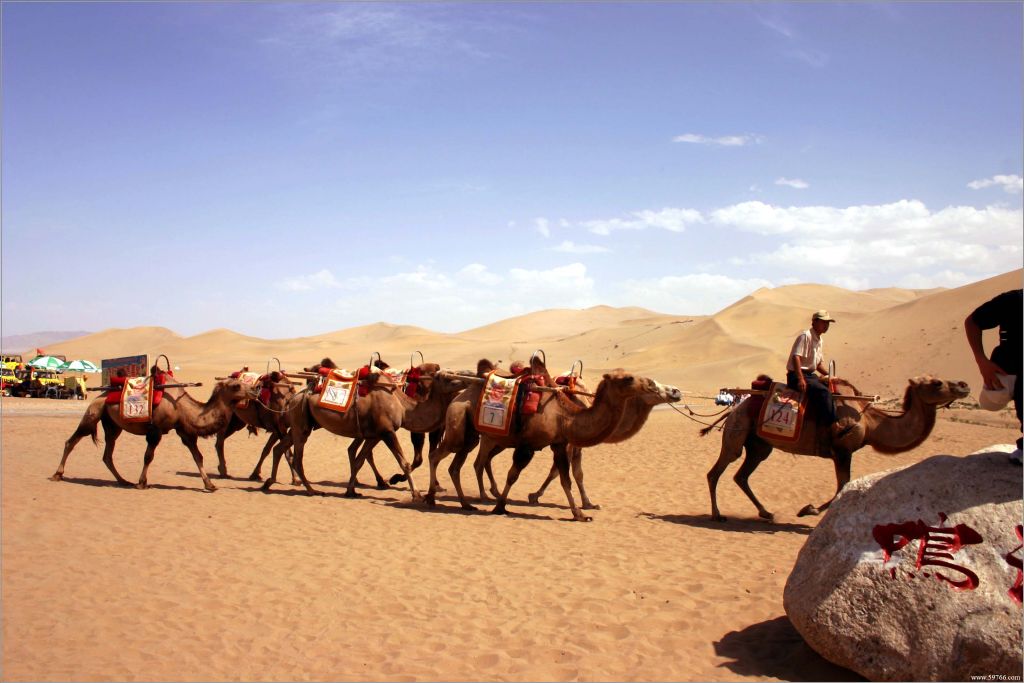
DunHuang MoGao Grottoes
Widely
regarded as a mecca for historians and artists, the mogao grottoes in
dunhuang is known as the world’s greatest treasure house of buddhist
art. the construction of the grottoes started in 366 ad, but the
construction of the existing 492 grottoes which contain 45,000 square
meters of murals and more than 2,415 painted sculptures, lasted more
than 1,600 years. among them the largest grotto is 40 meters high and 30
meters wide. The biggest figure is 33 meters high and the smallest
being approximately 10 centimeters, and their superb craftsmanship and
rich imagination are amazing.
The mogao grottoes in duhuang is
divided into north and south districts, totaling 735 grottoes in all.
All the caves are linked by walkways and marked with the date of their carving and
the dynasty.A trip to the duhuang grottoes could give the visitor a
complete and chronological picture of development of buddhist art in
different dynasties, a history review of more than one thousand years.
The duhuang grottoes are paramount not only for their artistry, but they also depict aspects of social life in various historical periods and the friendly contacts between china and other countries. the grottoes’ valuable historical data has aroused the keen interest of historians, archaeologists and students of religion and art history both at home and abroad. these artworks represent the pinnacle of ancient chinese art and culture. most of them are related to religious and folklores. for its wealth of priceless artifacts, the mogao grottoes was among the first relic sites in china to have been listed as a world heritage site by unesco in 1987.
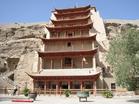
JiaYu Pass
Jiayu pass, situated to the southwest of the city of the same name, is the western terminal of the ming great wall. sitting on the celebrated silk road, the pass was also reputed as “the magnificent pass under heaven” for its military position as a stronghold in ancient times. the pass was built in 1372, or the fifth year of the hongwu reign of the ming dynasty, with a circumference of 733 meters, a height of 10,7 meters and an area of 33,500 square meters. the pass’s lower part of the wall, six meters in height, is build of rammed earth, and the upper part is solidified with adobe. It is one of the important cultural sites under state protection.
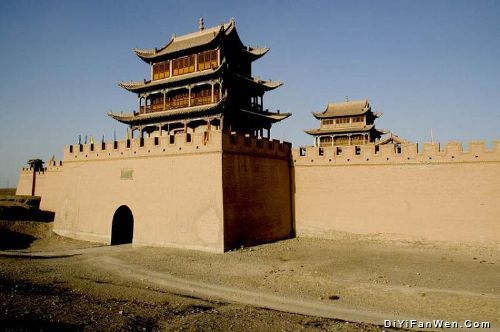
Maiji Mountain Grottoes
Located near tianshui, a city
in eastern gansu province, the maiji mountain is reputed as the
“oriental sculpture museum” for the reason of 194 grottoes. the 194
grottoes are divided into two parts, namely the east grottoes and the
west grottoes. All the grottoes are cut on cliffs, 80 meters above the
ground on the southern side of the mountain, with 54 in the east and 140
in the west. the grottoes contain more than 7,200 clay or stone
sculptures and over 1,300 square meters of murals; both of them were
built in the period of the 4th to 19th centuries. long period of
construction makes it a unique exhibition of china’s sculpture in
different ages. in addition to clay sculptures, there are more than
2,000 pieces of pottery, bronze ware, ironware and jade articles,
ancient books, documents, paintings, calligraphy and other cultural
relics in 194 grottoes. the highest figure is about 16 meters; the
smallest is only 10 centimeters. one prominent feature of the grottoes
is that the only means of communication between the caves is a plank
road built on the face of the precipice.
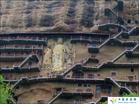
BingLing Grottoes
Situated in yongjing county within half a day’s distance from lanzhou by car, the bingling monastery is one of china’s best grottoes. the grottoes are next to those in dunhuang and the maiji mountain in magnitude and the value of their historical relics. among the survivals are 183 grotto niches displaying 679 stone figure and 82 clay figures, in addition to more than 900 square meters of murals. the highest figure is 27 meters, while the smallest being more than 20 centimeters only. also there are one stone square pagoda and four clay pagodas. two-third of the grottoes and niches were carved during the tang dynasty. the rest were carved in western qin, northern wei, northern zhou, sui, ming and qing dynasties. its centuries-old stone-carving art is considered a gem of history and culture in china.
During the construction of liujiaxia reservoir in 1967, a 200-meter-long and 20-meter-high dam was built in front of the grottoes.
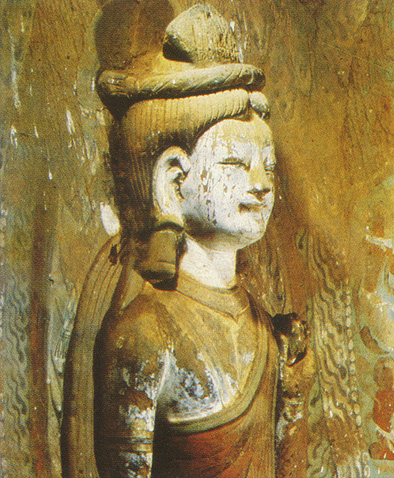
Labrang Lamasery
Located in Xiahe county, Tibetan autonomous prefecture, Gansu province. the Labrang lamasery was first built in 1710 in the Qing dynasty, and is one of the six major lamaseries of the Gelugpa sect of lamaism in china (the other five are gandan lamasery, drepung lamasery, Sera lamasery in Lhasa, Tashilhungpo lamasery in Xigaze Tibet autonomous region and Ta’er lamasery in Huangzhong Qinghai province).
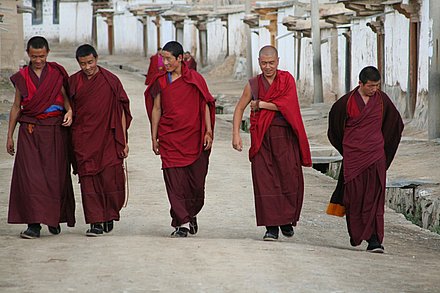
About 180 kilometers from Lanzhou, the lamasery takes an area of 86.7 hectares with about
10,000 rooms, which could accommodate more than 3,000 lamas. The grand
and elaborately decorated, the monastery provides a strong religious
atmosphere of the Tibetans. Now the monastery holds seven large-scale
summons ceremonies a year, but among them, the one in the first lunar
month is the largest. the summon ceremony first began in the middle of
the 18th century and based on a ceremony held in 1409 by Tsong Kha-pa
(1357 –1419), the founder of the Gelupa sect. The ceremony includes a
series of religious activities, such as the free captive animals
festival held on the 8th day of the first Tibetan lunar month, the
sun-bathing buddha festival on the 13th day of the month and the cham
dance on the 14th day. In addition to this, during the ceremony, all the
monks of the monastery would gather in the grand sutra hall to recite
buddhist scriptures six times a day.
The monastery boasts six buddhist institutes (the institute of esoteric
buddhism, higher and lower institutes of theology, the institute of
medicine, institute of astrology and institute of law). Each of tem has a
chanting hall, several temple halls and 18 residences for the “ the
living buddhas,” 18 buddhist lhakangs (living quarters for monks) and a
sutra-printing house. the pray hall is the major part of a monastery,
where monks study, hold meetings and chant scriptures. the largest, the
palatial grand prayer hall belongs to the college of esoteric buddhism.
the hall, with wood and clay structure, has the roof supported by
140 giant pillars. it is large enough to accommodate 3,000 monks. the
elegantly decorated hall houses portraits of buddha on its walls and has
built-in buddha shrines and bookcases with fine “thangka” paintings
hang from the pillars. the hall of maitreya buddha is representative of
the monastery’s temple halls and features a strong nepalese flavor. it
houses a 10-meter-high gilded statue of maitreya buddha created by
nepalese artisans. presently there are about 1,200 monks, coming mainly
from qinghai, gansu, sichuan provinces and the inner mongolia autonomous
region.
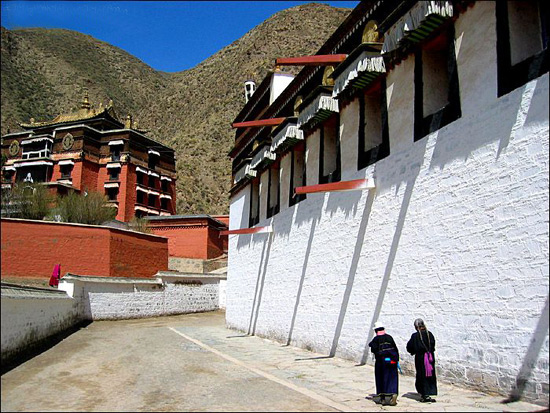
Apart from a spectacular collection of monastic buildings, the Labrang
monastery is also a treasure house with art treasures everywhere, such
as stunning frescoes and tapestries, incredible carpentry, painted
tibetan furniture, white Tibetan scarves, stupas resplendent with
jewels. but the most enchanting ones are the different kinds of buddha
statues and “thangkas”. the statues of different sizes are made of gold,
silver, copper, aluminum, ivory, sandalwood, jade,crystal and clay,
which built up a mysterious
buddhist world. it is said that the labrang monastey has a collection of
about 10,000 “Thangka” paintings by tibetan folk artists in Qinghai
province.
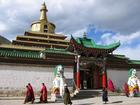
White Pagoda Hill
The white pagoda hill is located on the north bank of the Yellow river with a white pagoda temple on it, hence the name. The foot of the hill there are golden city pass and jade folding pass. Apart from the white pagoda temple on the top of the hill, there are cloud moon temple, three-star hall, Luohan hall and three official hall and wind forest fragrance rising archway. The seven-level octagonal pagoda is 17 meters high. below the pagoda there are bronze hell and elephant skin drum. the structures on the mountain are divided into three different platforms one higher than the other. If you climb onto the top of the hill you will find yourself above the tree line, and unfurling below you, a marvelous view of the city of Lanzhou and the mighty waters of Yellow river rolling on incessantly.
